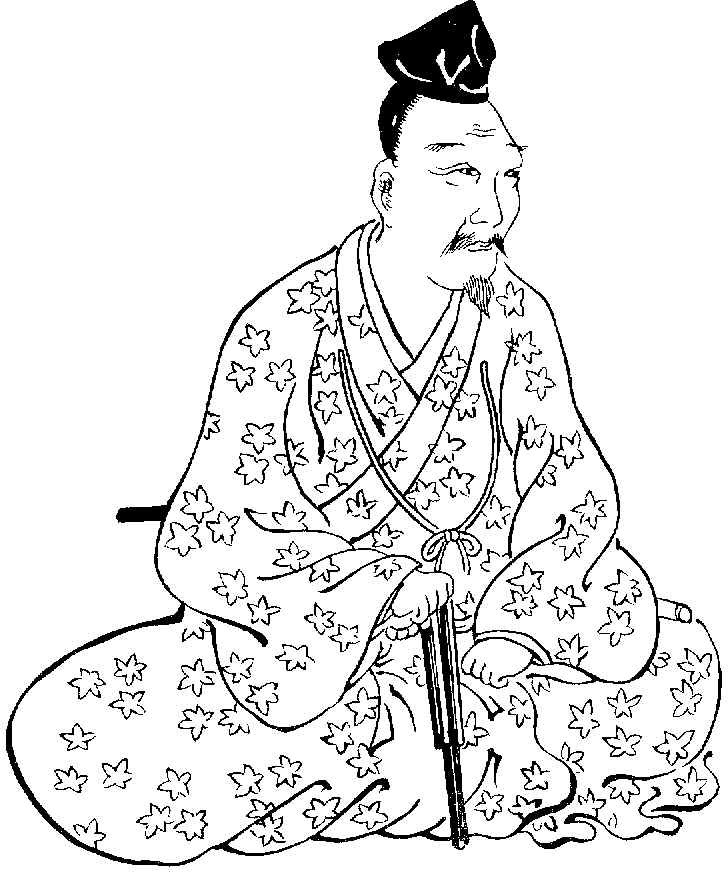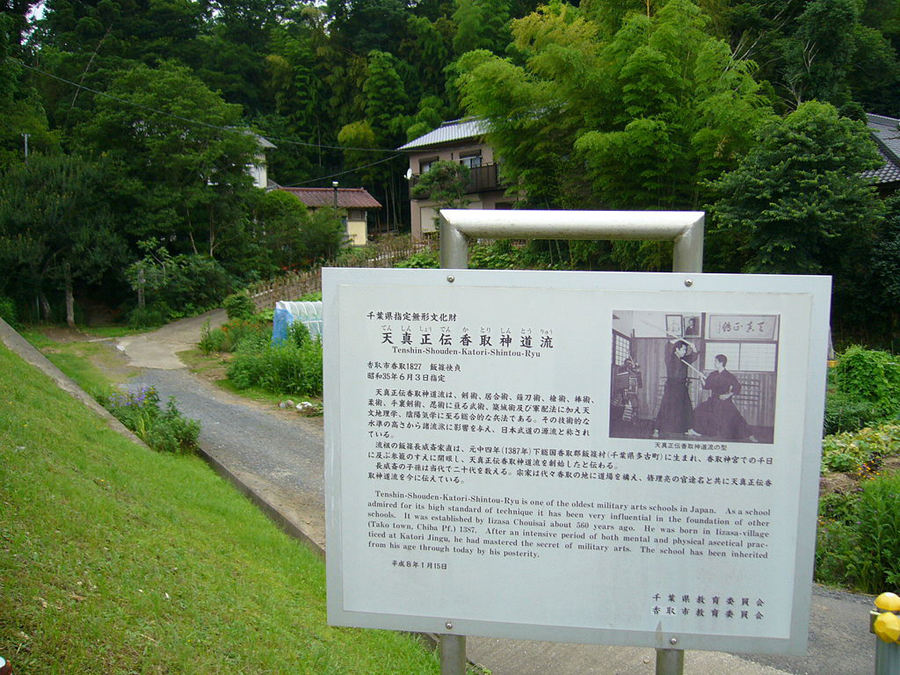By lyuesword | 21 June 2021 | 0 Comments
Foundation of Japanese Traditional Martial Art - Katori Shinto Ryu
Tenshin Shōden Katori Shintō-ryū (天真正伝香取神道流) is one of the oldest extant Japanese martial arts, and an exemplar of bujutsu. The Tenshin Shōden Katori Shintō-ryū was founded by Iizasa Ienao, born in 1387 in Iizasa village (modern Takomachi, Chiba Prefecture), who was living near Katori Shrine (Sawara City, Chiba Prefecture) at the time. The ryū gives 1447 as the year it was founded, but some scholars state that it was about 1480.
Foundation
Iizasa Ienao founded Tenshin Shōden Katori Shintō-ryū in 1447.

Iizasa Ienao (飯篠 長威斎 家直 Iizasa Chōi-sai Ienao, c.1387 – c.1488) was a respected spearman and swordsman whose daimyō was deposed, encouraging him to relinquish control of his household to conduct purification rituals and study martial arts in isolation.
Iizasa was born in the village of Iizasa in Shimōsa Province. When he was young, he moved to the vicinity of the famous Katori Shrine, a venerable Shinto institution northeast of Tokyo in modern-day Chiba Prefecture. The Katori Shrine enjoys a considerable martial reputation; the Shrine's Kami, Futsunushi 経津主神 (Futsunushi no kami) being revered as a spirit of swordsmanship and martial arts.
After studying swordsmanship he went to Kyoto, where, according to most authorities, he was employed in his youth by the eighth Muromachi shōgun, Ashikaga Yoshimasa (1436–1490), a devotee of the martial arts. Iizasa was later known as Yamashiro no Kami (governor of Yamashiro Province) in accordance with a practice of Muromachi times, whereby noted warriors took old court titles. Later on in his life, Iizasa became a Buddhist lay monk and was known as Chōi-sai, sai being a character that many noted swordsmen chose for their martial name.
When Chōi-sai returned home, he offered prayers to the deities of both Katori Shrine and Kashima Shrine, the latter being a famous local shrine in nearby Ibaraki Prefecture, where shrine officials themselves reputedly practised a form of swordsmanship, called 'Hitotsu no Tachi' (the solitary sword). Even today the Kashima Shrine training hall attracts Kendo practitioners from around the world, and the chief object of interest for visitors is the shrine's sacred sword. Supplementing his considerable skills with assorted weaponry, Chōi-sai was also an expert in Musō Jikiden ryū yawaragi, holding the position of seventh Headmaster in the history of that ryū. Katori Shinto Ryu Dojo training hall in Katori city, Japan
Katori Shinto Ryu Dojo training hall in Katori city, Japan
Legend says at the age of 60 Chōi-sai spent 1000 days in Katori Shrine practicing martial techniques day and night, until the kami of the shrine, Futsunushi (経津), appeared to him in a dream and handed down the secrets of martial strategy in a scroll named Mokuroku Heiho no Shinsho. He called his swordsmanship style derived from this miraculous dream the Tenshin Shōden Katori Shintō-ryū, the "Heavenly True, Correctly Transmitted Style of the Way of the God of Katori".
This legend is typical of martial arts ryū and other cultural forms as well. Ryū founders often attributed their mastery to magical teachings transmitted by Shinto or Buddhist deities, by long-dead historical figures like Minamoto no Yoshitsune, or by legendary supernatural creatures such as the tengu, Japanese goblins commonly depicted with a long red nose.
Iizasa's Tenshin Shōden Katori Shintō-ryū, thus presumably linked to the sacred tradition of both Katori and Kashima Shrines, was transmitted through his own family.
Want a unique sword? Feel free to contact us:
Email: lyuesword@hotmail.com
Website: www.lyuesword.com
Custom Sword Page: www.lyuesword.com/Custom-Sword/customization-options/Create-Your-Own-Swords
Foundation
Iizasa Ienao founded Tenshin Shōden Katori Shintō-ryū in 1447.

Iizasa Ienao (飯篠 長威斎 家直 Iizasa Chōi-sai Ienao, c.1387 – c.1488) was a respected spearman and swordsman whose daimyō was deposed, encouraging him to relinquish control of his household to conduct purification rituals and study martial arts in isolation.
Iizasa was born in the village of Iizasa in Shimōsa Province. When he was young, he moved to the vicinity of the famous Katori Shrine, a venerable Shinto institution northeast of Tokyo in modern-day Chiba Prefecture. The Katori Shrine enjoys a considerable martial reputation; the Shrine's Kami, Futsunushi 経津主神 (Futsunushi no kami) being revered as a spirit of swordsmanship and martial arts.
After studying swordsmanship he went to Kyoto, where, according to most authorities, he was employed in his youth by the eighth Muromachi shōgun, Ashikaga Yoshimasa (1436–1490), a devotee of the martial arts. Iizasa was later known as Yamashiro no Kami (governor of Yamashiro Province) in accordance with a practice of Muromachi times, whereby noted warriors took old court titles. Later on in his life, Iizasa became a Buddhist lay monk and was known as Chōi-sai, sai being a character that many noted swordsmen chose for their martial name.
When Chōi-sai returned home, he offered prayers to the deities of both Katori Shrine and Kashima Shrine, the latter being a famous local shrine in nearby Ibaraki Prefecture, where shrine officials themselves reputedly practised a form of swordsmanship, called 'Hitotsu no Tachi' (the solitary sword). Even today the Kashima Shrine training hall attracts Kendo practitioners from around the world, and the chief object of interest for visitors is the shrine's sacred sword. Supplementing his considerable skills with assorted weaponry, Chōi-sai was also an expert in Musō Jikiden ryū yawaragi, holding the position of seventh Headmaster in the history of that ryū.
 Katori Shinto Ryu Dojo training hall in Katori city, Japan
Katori Shinto Ryu Dojo training hall in Katori city, JapanLegend says at the age of 60 Chōi-sai spent 1000 days in Katori Shrine practicing martial techniques day and night, until the kami of the shrine, Futsunushi (経津), appeared to him in a dream and handed down the secrets of martial strategy in a scroll named Mokuroku Heiho no Shinsho. He called his swordsmanship style derived from this miraculous dream the Tenshin Shōden Katori Shintō-ryū, the "Heavenly True, Correctly Transmitted Style of the Way of the God of Katori".
This legend is typical of martial arts ryū and other cultural forms as well. Ryū founders often attributed their mastery to magical teachings transmitted by Shinto or Buddhist deities, by long-dead historical figures like Minamoto no Yoshitsune, or by legendary supernatural creatures such as the tengu, Japanese goblins commonly depicted with a long red nose.
Iizasa's Tenshin Shōden Katori Shintō-ryū, thus presumably linked to the sacred tradition of both Katori and Kashima Shrines, was transmitted through his own family.
Want a unique sword? Feel free to contact us:
Email: lyuesword@hotmail.com
Website: www.lyuesword.com
Custom Sword Page: www.lyuesword.com/Custom-Sword/customization-options/Create-Your-Own-Swords
Leave a Reply
Your email address will not be published.Required fields are marked. *